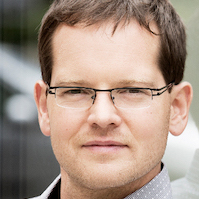Deployment of the SpiNNaker2 Neuromorphic Supercomputer
Title: Deployment of the SpiNNaker2 Neuromorphic Supercomputer at TUD Dresden University of Technology
Project duration: 1/7/2022 – 30/06/2024
Research Area: Methods and Hardware for Neuro-Inspired Computing
The SpiNNaker2 chip and system architecture has been developed by the HPSN chair together with the University of Manchester (group of Steve Furber) from 2013 on. After successful manufacturing and bring-up of the chip in 2021 and 2022, deployment of a 5 million core machine at TU Dresden, named SpiNNcloud, is currently ongoing and shall be finished in mid-2024. The SpiNNaker2 system employs a massive amount of ARM M4f microcontrollers (153 per chip) that are embedded in a slim, low-latency communication fabric inspired from neuronal connections in the brain. SpiNNaker2 is a generally programmable computing substrate, but greatly differs from classical architectures like CPUs or GPUs, allowing for more distributed and asynchronous processing and simulation approaches. ScaDS.AI will support the deployment of the SpiNNcloud by physical construction assistance, by developing low-level software for the bring-up of the server boards and the firmware for scalable communication between chips and host computers.
Aims
The aim of this project is to support the deployment and bring-up of the SpiNNcloud neurmorphic supercomputer at TU Dresden. This includes the development of low-level software, e.g., resource allocation, system health and power monitoring and the assistance of the SpiNNaker2 rack-level assembly, test and bring up. It further involves the adaptation of high-level software and firmware from SpiNNaker1 for the scalable communication between SpiNNaker2 chips and between chips and host servers.
Problem
As the SpiNNaker2 system is constructed from scratch (I.e. from the chip on upwards), none of the usual construction and low-level software support is available from Vendors. Basic construction of SpiNNaker2 is supported by the “SpiNNcloud” grant from EFRE/SMWK. However, for the integration into server racks and with conventional compute servers, there is significant work needed. This includes the testing and bring-up of board PCBs, physical assembly of slides, as well as software development for the baseboard management controller. Furthermore, the software for the communication between the custom chips and between chips and the host needs to ported and upgraded from the 1st generation system at University of Manchester.
Technology
The skills required for the deployment of the SpiNNcloud include: assembly and operation of server racks; design, test and bring-up of printed circuit boards; embedded software development for baseboard management controllers; firmware development for custom multiprocessor chips with custom chip-to-chip communication; high-performance C++ software for UDP-based communication with SpiNNaker2 chips.
Outlook
The successful deployment and initial bring-up of the SpiNNcloud in mid-2024 will set a milestone for large-scale brain-inspired computing. This will be the first time, that a neuro-inspired computer is available with the capacity to simulate the human brain in real-time. It will also allow exploring many neuro-inspired algorithms for energy-efficient and real-time AI processing. After the bring-up, the SpiNNcloud will be made available to a larger community, including ScaDS.AI partner and academia worldwide. Training courses and user workshops will also be organized within ScaDS.AI.
Publications
- Vogginger, B., Kelber, F., Jobst, M., Yan, Y., Gerhards, P., Weih, M., & Akl, M. py-spinnaker2, November 2023. https://zenodo.org/doi/10.5281/zenodo.10202109
- Gonzalez, H. A., Huang, J., Kelber, F., Nazeer, K. K., Langer, T., Liu, C., … & Mayr, C. (2023). Spinnaker2: A large-scale neuromorphic system for event-based and asynchronous machine learning. In First Workshop on Machine Learning with New Compute Paradigms, 2023, https://openreview.net/forum?id=KAiPD1OwvF
- Yik, J., Ahmed, S. H., Ahmed, Z., Anderson, B., Andreou, A. G., Bartolozzi, C., …, Mayr, C., …, Vogginger, B., … & Reddi, V. J. (2023). NeuroBench: Advancing neuromorphic computing through collaborative, fair and representative benchmarking. arXiv preprint arXiv:2304.04640. https://doi.org/10.48550/arXiv.2304.04640, submitted to Nature Communications
- Bernhard Vogginger, Amirhossein Rostami, Vaibhav Jain, Sirine Arfa, Andreas Hantsch, Da-vid Kappel, Michael Schäfer, Ulrike Faltings, Hector A. Gonzalez, Chen Liu, Christian Mayr (2024). Neuromorphic hardware for sustainable AI data centers. arXiv preprint ar-Xiv:2402.02521. https://arxiv.org/abs/2402.02521, accepted as Poster for NICE 2024
Team
Lead
Prof. Dr.-Ing. Christian Mayr
Team Members
- Stefan Schiefer
- Marco Stolba
- Andreas Dixius
- Florian Kelber
- Johannes Partzsch
- Bernhard Vogginger
- Matthias Lohrmann



